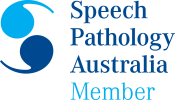A recent study led by Professor Courtenay Norbury assessed children in primary schools across Surrey, has found that roughly two children in each Year 1 class has a clinically significant language disorder that his or her learning. This roughly equates to 7.58% of all children. This was found to be vastly different to the statistical data provided through the Department of Education, which indicates that only 3.04% of children in Year 1 of the same year were identified by schools as having language difficulties. This means that over half of these children with language difficulties are not being identified by schools and most likely missing out on receiving the crucial support they require.
This figure is even quite conservative given that the data encompassed by the department of education covers a wider group, including for example those with speech difficulties. It also includes children with English as an Additional Language, and those attending special schools – which this current study excludes. What could be the possible reasons for this identification gap?
A few years back, the Communication Trust used the phrase ‘mistaken, misunderstood, missed‘ to describe children with language difficulties. Yes, there are definitely some children whose needs are missed, or not identified – especially at the beginning of primary school when the curriculum is relatively straightforward. It may be only later on when learning becomes more complicated and dependent on technical, complex language when children have problems. However, in many more pupils language needs may be mistaken for and recorded as something else.
In the SCALES study, for example, a sizable proportion of the children identified as having a language disorder were reported by schools as having Autistic Spectrum Disorder (ASD). Finally, there are those pupils whose needs are misunderstood as something completely different. Schools generally notice when there is a problem, especially a behaviour problem, but do not always understand that this may be because of an underlying language difficulty.
It looks as though these unidentified children may be ‘hidden’ elsewhere in the Education Department statistics. The child’s needs may be identified however, the language component may not have been. The studies statistics indicate that only half of the children identified with language difficulties had been referred for speech and language therapy. One reason for children seeming to be ‘missed’ might be that even after being identified, these children’s difficulties may not be severe enough to qualify for therapy, or extended waiting list may discourage staff from raising concern with families due to the lack of immediate help available at the school or locally.
Without the support they need, children with speech and language difficulties run the risk of school failure, relationships that don’t work and ultimately limited life chances. But with the right support at the right time, children with language difficulties can achieve their potential.
Reference
http://www.huffingtonpost.co.uk/mary-hartshorne/children
The post Children With Language Disorders: Missed Or Mis-Identified? appeared first on ENT Wellbeing Sydney.










